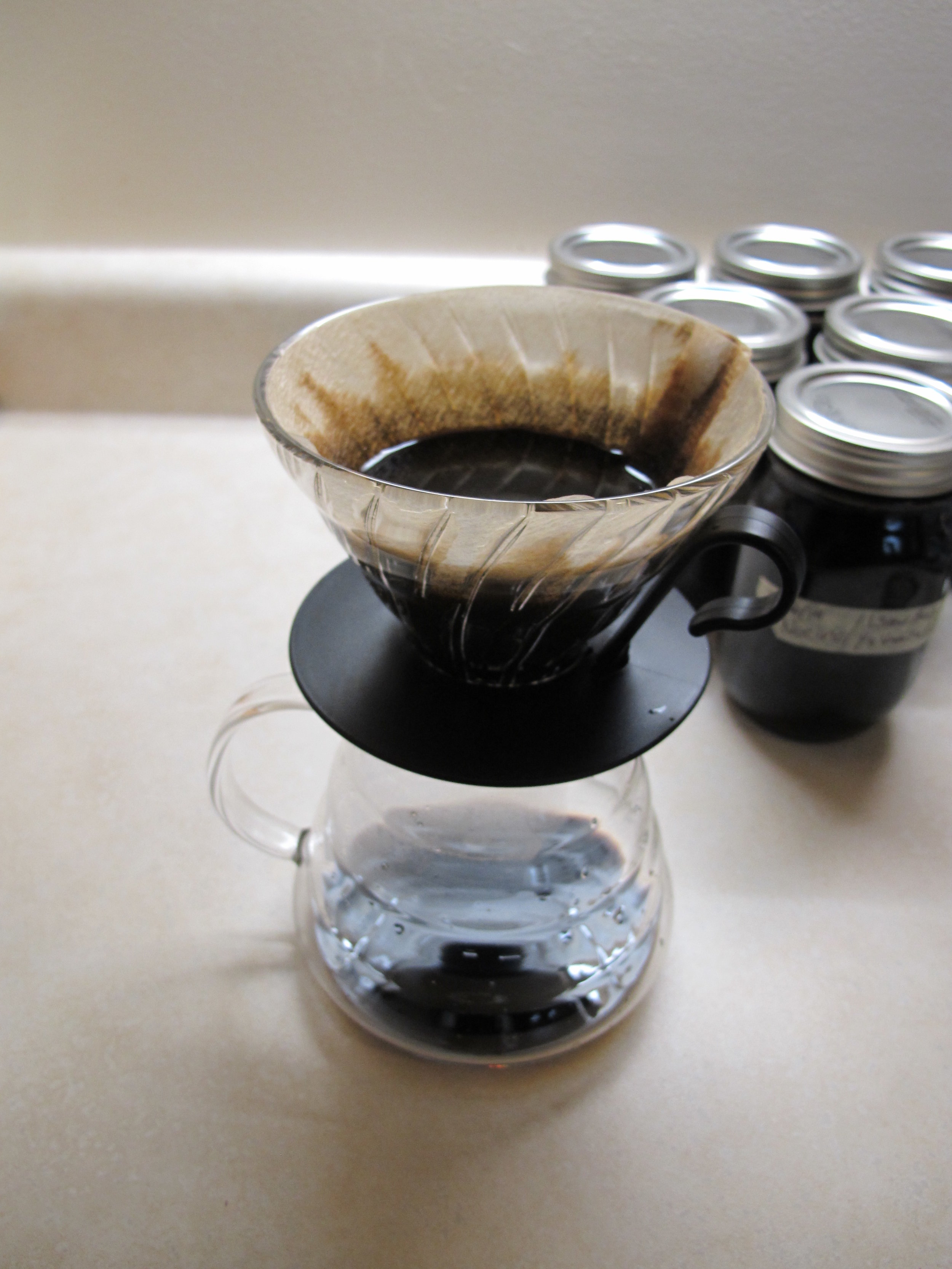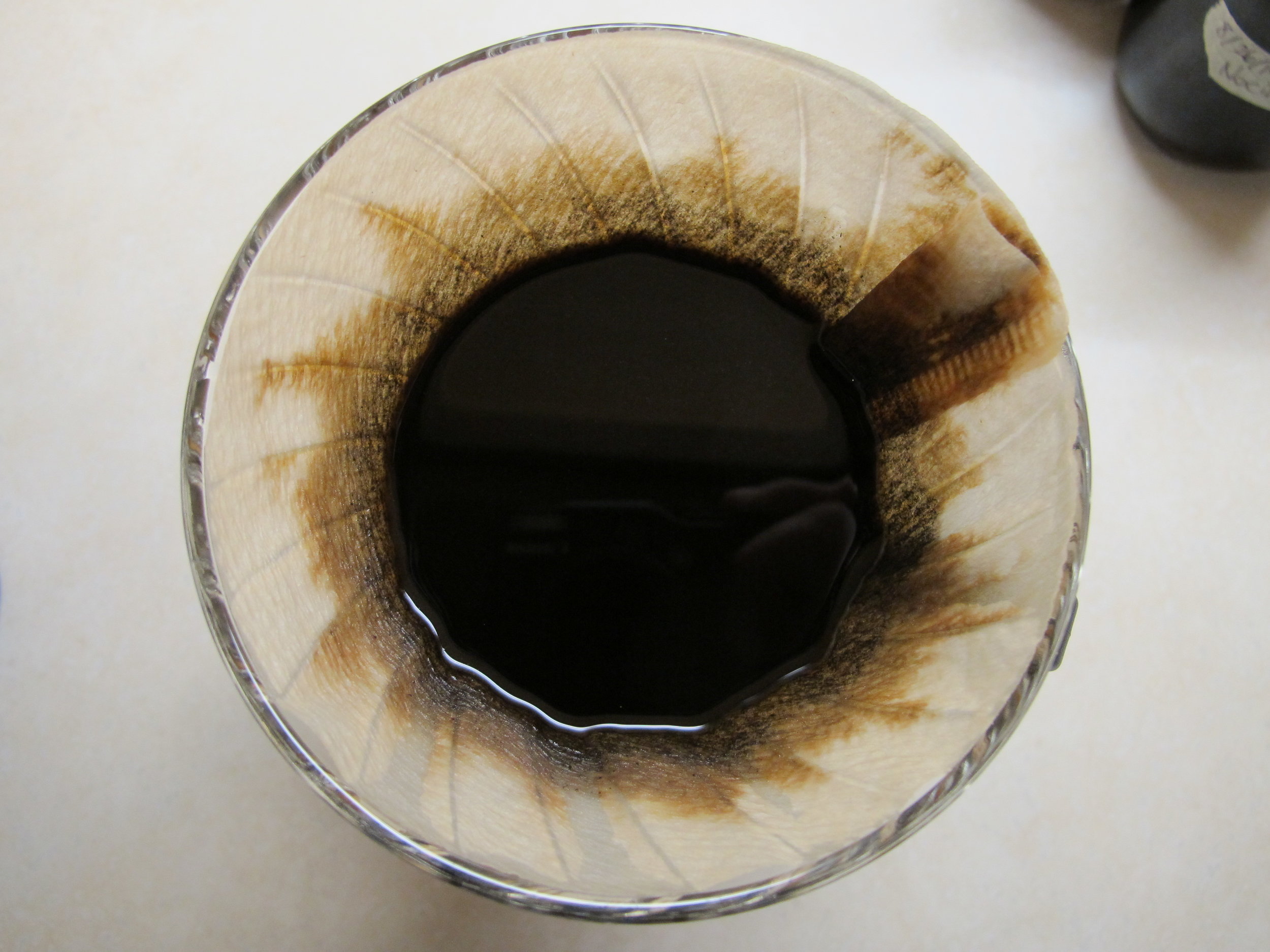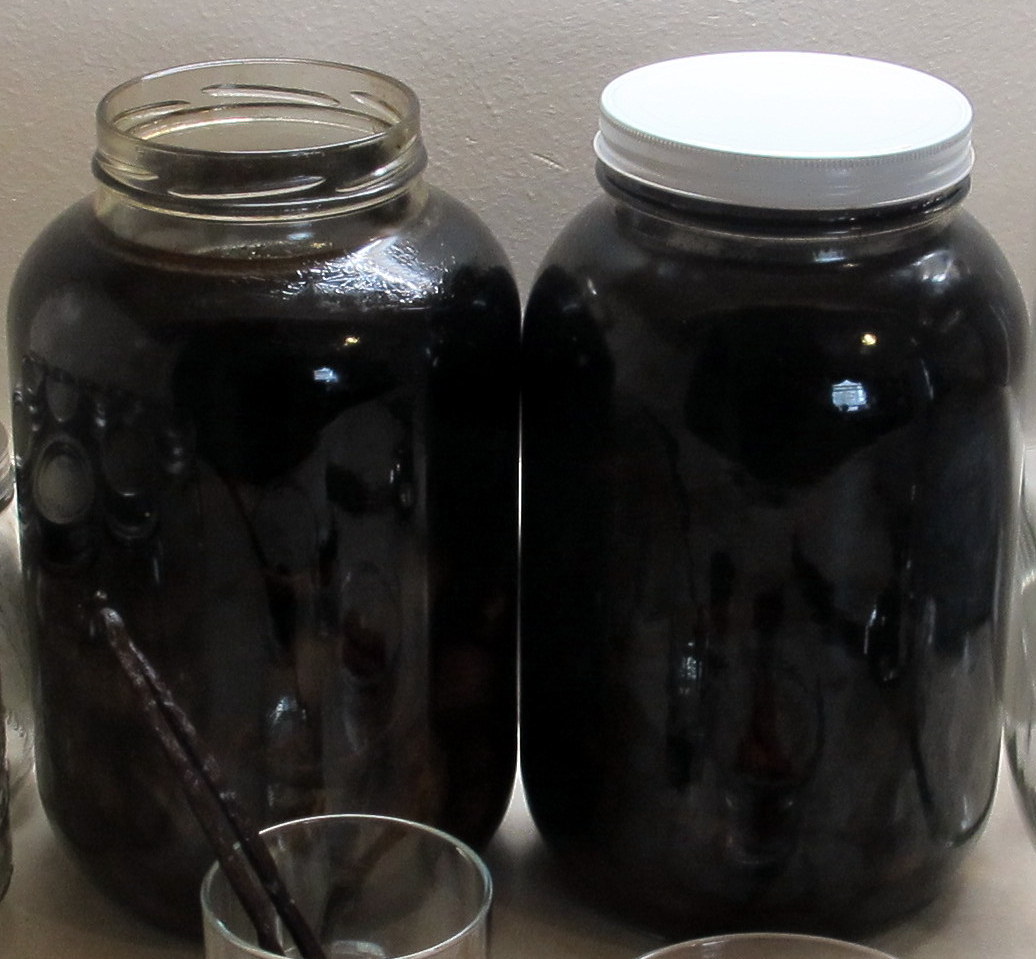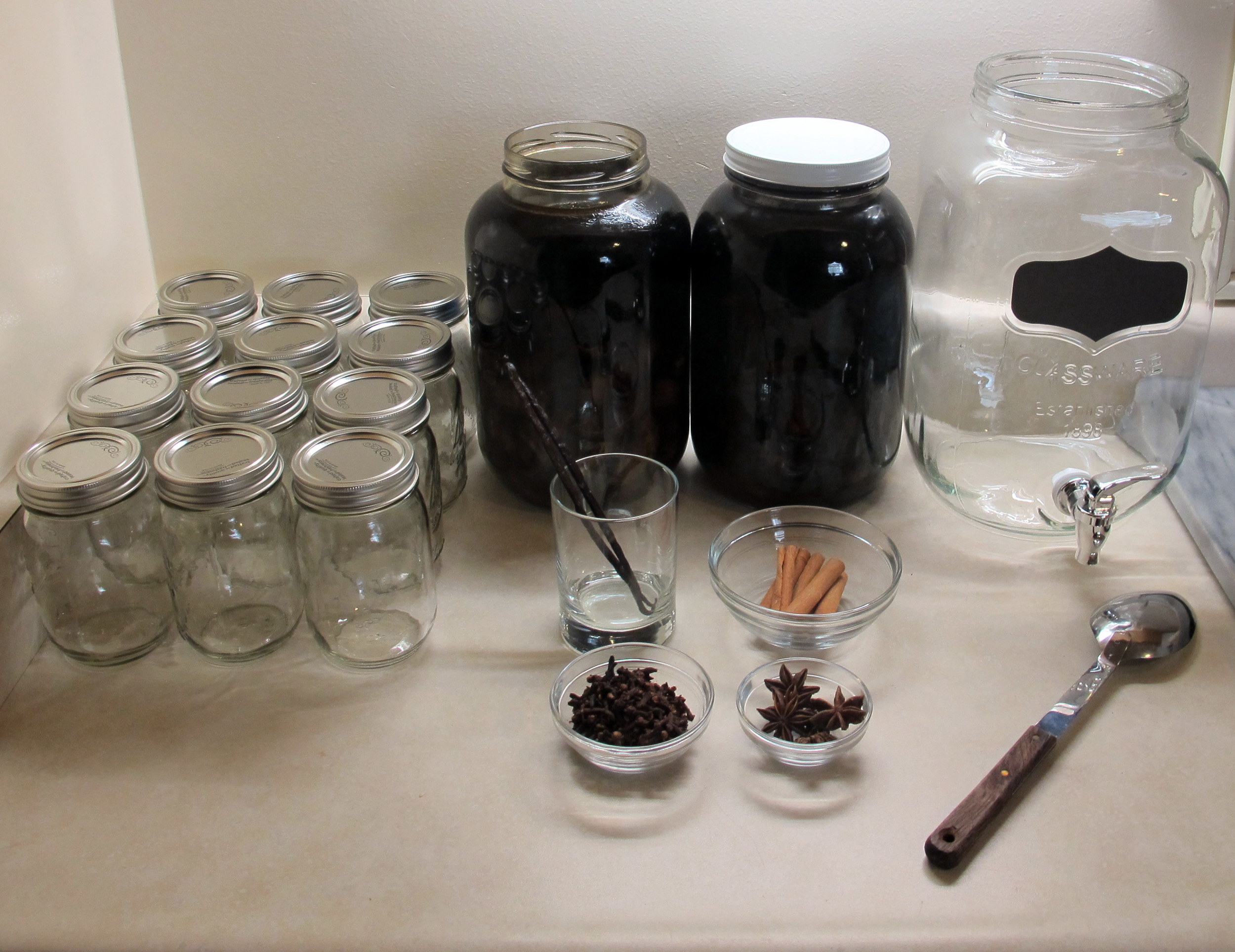How to Make Homemade Nocino Part 3
While making my own nocino has not been a difficult process it does take quite a bit of time to rest and mellow. In part 1 I described the process of extracting the walnut flavors and creating the base liqueur. In part 2 I created a variety of spice mixes and decanted the fledgling nocino into nine glass jars.
- Clove, Cinnamon
- Cinnamon, Star Anise
- Cinnamon, Clove, Star Anise, Vanilla
- Star Anise, Vanilla
- Lemon, Cinnamon, Clove
- Lemon, Cinnamon, Star Anise
- Lemon, Cinnamon, Clove, Star Anise, Vanilla
- Lemon, Star Anise, Vanilla
- No added spices.
Most recipes I've seen suggest that after the spices have been added, to let the nocino rest for up to a year. So almost exactly one year later I decanted and filtered each jar using a V60 coffee setup. For some silly reason I shook the first jar which stirred up a bunch of fine sediment and took forever to filter. With each successive jar I was careful not disturb the sediment which made the filtering step so much quicker. As I filtered each jar of nocino I cleaned the jars so that I could reuse them.
At the time I was doing this my wife and I had a 1 year old boy and I didn't have a lot of time to spend with the nocino so after each jar was filtered I put the contents back into its now clean jar and sealed it back up. My intent was revisit them the next week and see which spice mix I liked best. However, time has a way of slipping away from you when you have a baby so I didn't come back to retaste the nocino until more than a year after I filtered them.
Tasting through each jar was very informative and a little disappointing. Except for the nocino that didn't have any spices added to it, none were good enough on their own to keep separate. In each one, the intensity of the spices was out of balance with the walnuts, sugar and alcohol. But, rather than throw them out I decided to blend some of them together and see if I could make the sum of the parts better than the whole. However, even after blending some of the jars together the results were less than stellar because I left the added spices to macerate for way too long. At this point the only hope I have of saving the nocio is by adding some mint to it and trying to transform it into a fernet which might work better with its current intensity of the spices.
Conclusions:
When I tasted the different jars of nocino there were a few things that were immediately obvious.
- The nut flavor and mouthfeel of the nocino made by desiccating the green walnuts with raw sugar before I added the alcohol was by far superior to macerating the green walnuts with alcohol and simple syrup.
- Macerating the lemon with the green walnuts, alcohol and simple syrup was way to long and it left a not so pleasant and bitter lemon flavor from the zest.
- Even though I tried to put small quantities of spices in each jar, I included way too much. while there are some that I like more than others, in the future I will need to use less spices per unit volume and it would probably be best.
- Macerating the spices for 12 months is too long. The nocino does need to rest for 12 months but it would be better to taste the nocino in week long intervals to see how the extraction progresses.
- Time is your friend when making amazing nocino. When I tasted the 2 year old jar of nocino that I had filled without spices it was fantastic. After a year the tannins were still pretty strong, but after two years it has a good balance between bitter and sweet. It had a very nice, nose of light coco powder, and cedar...
In the end this was a fantastic project and even though I wasn't supper excited by any of the spices versions, I learned some excellent lessons that will make my next batch of nocino even better.







